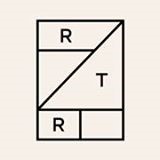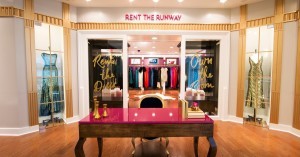Rent the Runway – Fashionable Operations

“We’re not in the fashion business. We’re in the fashion-technology-engineering-supply chain-operations-reverse logistics-dry cleaning-analytics business.”
Founded by two HBS graduates in 2009, Rent the Runway (“RTR”) partners with designers to offer high-end dresses and accessories for online rental at affordable prices. RTR founders – Jennifer Hyman and Jennifer Fleiss – noted that young women often faced the dilemma of buying expensive designer dresses which they would only wear once, especially after photos of them wearing these dresses were posted on social media. To resolve this dilemma, Hyman and Fleiss decided to create a platform to make luxury brands accessible to everyone through rental.
The analysis below illustrates how RTR is highly effective at designing an operating model which closely aligns with its business model to create value for customers, designers, and the company itself.
Business Model
The firm creates value to both customers and designers. For customers, RTR significantly lowers the cost of acquiring a designer dress for a special occasion, typically renting at 10% of the retail price[1]. Customers can choose to rent out dresses for a four or eight-day period, allowing sufficient time to try the rental dress and in case it does not work, exchange it for another one right in time for the event[2]. The rental experience is designed to be highly convenient and flexible, with RTR providing a free second size, an inexpensive second style as a backup (for an additional $32.5), and a prepaid package for customers to return the dresses. After the return, RTR takes care of the dry cleaning, which is included in the rental price.
For designers, RTR provides them with a platform to rent their collections to and build loyalty among young women who will grow into designer brand customers in the coming years. In addition, designers receive feedback from RTR on what styles and colors are most popular, as well as how well their dresses fit, powered by RTR’s data collection and analytics[3].
Operating Model
The core of RTR’s business model relies on offering a sizable, fashionable selection of dresses and accessories and making the rental experience as convenient and flexible as possible. In addition, RTR needs to take good care of the dresses to maximize their useful life and minimize inventory to drive sales. RTR supports its business model with a five-step operating model.
- Partnering with Designers: RTR builds exclusive relationships with high-end designers to maintain an extensive and in-demand inventory for customers to choose from. Decisions about what to add to or remove from the inventory are further informed by RTR’s data analysis capabilities, as described in point #5.
- Fitting: To help customers navigate the 65,000 items in its inventory and identify the best fit, RTR created “Our Runway”, a section on the website where customers can see how other customers, not models, look in a dress.
- Order Fulfilling: RTR leverages its proprietary allocation system to fulfill orders. The system tracks items coming in and out and prioritizes orders, taking into consideration time required for dry cleaning and any repairs.
- Returning: RTR operates a dry cleaning and processing empire in its 150,000 sq. ft. warehouse, where all dresses and accessories are returned. Having received items returned by customers, the allocation system scans the barcodes and determines what to prioritize. Workers then inspect the dresses and conduct either regular dry cleaning, stain removal, or repairs as needed. RTR employs some of the world class “spotters” to remove stains in a timely manner, significantly improving the useful life of a dress. The dresses are then steam pressed, re-inspected, bagged, and mailed to the next customer. 60% of dresses are back out of the door on the same day[4].
- Data Analysis: RTR analyzes an enormous amount of data on customer preferences, renting behaviors, and feedback to consistently improve its inventory selection and rental process.
RTR’s partnerships with designers and strong data analysis capabilities enable it to provide a wide range of sought-after designer products to customers and to feed the valuable customer insights back to the designers. In addition, its highly efficient order prioritization, dry cleaning, and order fulfilling process allows it to offer both reliable delivery and flexibility (in terms of a free second size and an inexpensive backup style) to customers. Lastly, the RTR warehouse’s record turnaround time enables it to minimize idle inventory and maximize sales.
Sources:
[1] TechCrunch. http://techcrunch.com/2013/03/11/amex-conde-nast-back-the-netflix-for-designer-clothes-rent-the-runway/
[2] Rent the Runway – How it Works. https://help.renttherunway.com/hc/en-us
[3] Forbes. http://www.forbes.com/sites/sashagalbraith/2013/12/03/the-secret-behind-rent-the-runways-success/
[4] Forbes. http://www.forbes.com/sites/stevenbertoni/2014/08/26/the-secret-mojo-behind-rent-the-runways-rental-machine/





Great post, Zhihan! As Rent the Runway starts to expand into everyday wear, it’ll be interesting to see if their current operating competencies translate well into that market. I’m curious to see what complications, if any, may arise with their returning capabilities (does everyday wear lead to wear-and-tear issues that they have not yet seen with cocktail dresses and ballgowns?) and data analysis (can they effectively manage an ever-expanding inventory base and big data around customer preferences?). Also, does the current value proposition translate to everyday wear, i.e., people are willing to pay a rental premium for an item they wear once (to a fancy event), but will the same value proposition be there for everyday clothing that they may want to wear a few times? I do think that our generation is moving towards more renting / less owned material goods in every aspect of our lives, so this model capitalizes well on that trend, but eager to see how RTR is able to expand into other categories of fashion!
Very interesting post, they have definitely done some cool things in the area of high fashion retail. Seems like they have been hitting a few snags as they look for ways to expand beyond their original model with their everyday wear (as mentioned above) and their attempt at an unlimited subscription business with clothes and accessories. It’s not clear where the next step is for the business and I’m curious to see what they do!
I really enjoyed this post, Zhihan! It was very interesting to learn that for 60% of dresses, they can receive, wash, and send the dress back out, all in the same day. I’m wondering how scalable RTR will prove to be in the future, now that so many people have learned about them. Specifically, how they will allow their products to remain exclusive, and how will they make sure their inventory works for busy times of year? While they are designer items, I see that they carry a lot of the same designer, and I’m wondering if those particular designers will see their value suffer if their brands are seen as more accessible. I tried to use RTR for Holidazzle, likely too close to the event, and there was very little selection available to me once I tried to filter options (black tie, late 20s, etc), and I hope that RTR has plans to handle appealing to a broader audience!
Thanks for the post Zhihan. Like Monica, I’m also amazed by the fact that 60% of dresses are returned from one customer and sent back out the door to another customer on the same day. This is a critical operating metric because it minimizes their inventory risk. I like the catchy quote at the top, but ultimately Rent the Runway seems to me like a fashion company, just with an unusual operating model to match its unusual business model. Like other fashion companies, one of the keys to success is avoiding inventory obsolescence. Whereas most fashion companies produce clothing that they hope to be able to sell once, Rent the Runway is buying fashion wear and using its technology-engineering-supply chain-reverse logistics-dry cleaning-analytics operations to ensure that it can rent that dress out enough times to turn a profit before it becomes obsolete. In addition to the operations identified by the company, I think it also benefits from working with designers instead of producing its own dresses – that allows it to shift / add / drop styles more quickly.